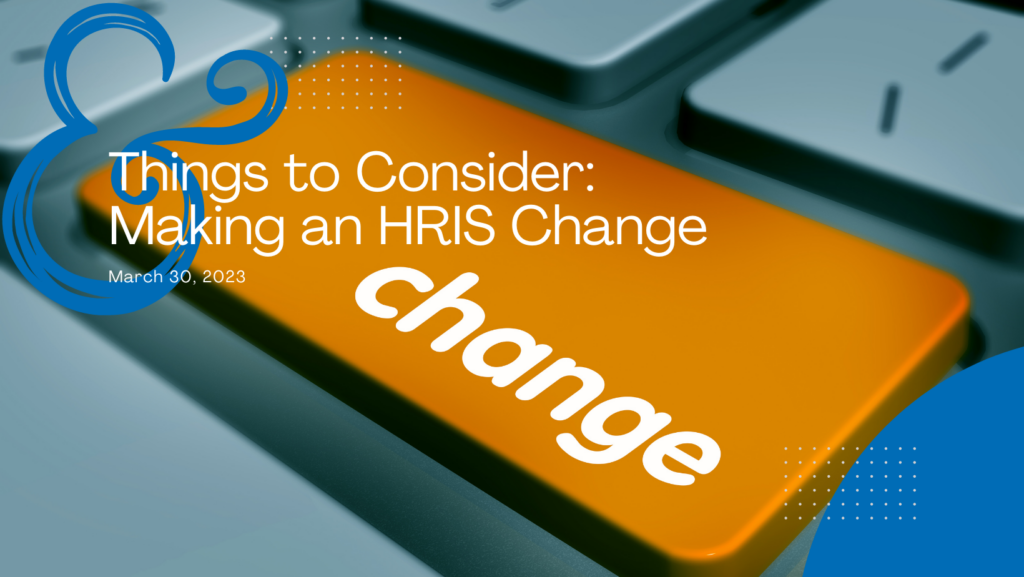
Employers are looking for ways to improve their efficiencies and one way this can be accomplished is by switching to a new HR software package. These HRIS changes are worth it in the long run, but involve countless moving parts and often take months to complete. Thinking through your processes up front can save you time, especially when it comes to the data files and feeds that Thomas & Company uses to support the services we provide.
It Is Never Too Early
We know that HRIS changes take time. Depending on the complexity of your existing HRIS system, and the changes that you are making, these projects can often stretch over a year or more. It is best to alert your client services representative as soon as you finalize the new HRIS vendor. Even though it may be a while before you get to the data file stage of the process, it is important to get Thomas & Company listed as a partner and identify the existing files early in the process so they can be worked into the overall project timeline. You don’t want to get to the end of the project and discover that these critical files haven’t been built.
Explore New Opportunities
At Thomas & Company, we are always looking at our file formats and making adjustments to improve the services we deliver. For most of our clients, there isn’t a need to revamp the file feed every time a change is made. However, when you are considering making an HRIS change, it is also a good time to review your existing file feed to see if any of the new data fields could be used to improve current processes and workflows or enable the use of additional services such a state separation notices.
Mitigate the Risk
The service(s) you partner with Thomas & Company for rely on consistent communication of data. Whether you are an unemployment, employment and wage verification, and/or Work Opportunity Tax Credit (WOTC) client, the data you share enables us to streamline these services. If your file feeds are interrupted or added later in the HRIS change process, it can lead to manual processing and delays until the new files can be implemented. It can sometimes take an additional 3-6 months to build a new file, especially if they are identified later in the process with your HRIS vender. This is also relevant if your new HRIS system will be using new or modified location or termination codes, as these are key components impacting our services.
By letting us know about any possible HRIS changes early in the process, Thomas & Company can help you identify the impact on your service(s), including what data we are receiving, the frequency, and if there are any potential opportunities to make changes to improve upon the services we deliver. We know that HRIS changes are complex, and we are here to help make the most out of the experience.
